University Calculus: Early Transcendentals 4th Edition by Joel Hass, ISBN-13: 978-0134995540
Original price was: $50.00.$19.99Current price is: $19.99.
University Calculus: Early Transcendentals 4th Edition by Joel Hass, ISBN-13: 978-0134995540
[PDF eBook eTextbook]
- Publisher: Pearson; 4th edition (January 1, 2019)
- Language: English
- 1104 pages
- ISBN-10: 0134995546
- ISBN-13: 978-0134995540
For 3-semester or 4-quarter¿ courses covering single¿ variable and multivariable calculus, taken by students of mathematics, engineering, natural sciences, or economics.
Clear, precise, concise.
University Calculus: Early Transcendentals helps students generalize and apply the key ideas of calculus through clear and precise explanations, thoughtfully chosen examples, meticulously crafted figures, and superior exercise sets. This text offers the right mix of basic, conceptual, and challenging exercises, along with meaningful applications. In the 4th Edition, new co-authors Chris Heil (Georgia Institute of Technology) and Przemyslaw Bogacki (Old Dominion University) partner with author Joel Hass to preserve the text’s time-tested features while revisiting every word, figure, and MyLab™ question with today’s students in mind.
Table of Contents:
Preface
New to This Edition
Accuracy Checkers
Reviewers for the Fourth Edition
1 Functions
1.1 Functions and Their Graphs
Functions; Domain and Range
Graphs of Functions
Representing a Function Numerically
The Vertical Line Test for a Function
Piecewise-Defined Functions
Increasing and Decreasing Functions
Even Functions and Odd Functions: Symmetry
Common Functions
Linear Functions
Power Functions
Polynomials
Rational Functions
Algebraic Functions
Trigonometric Functions
Exponential Functions
Logarithmic Functions
Transcendental Functions
Exercises 1.1
Functions
Finding Formulas for Functions
Functions and Graphs
Piecewise-Defined Functions
The Greatest and Least Integer Functions
Increasing and Decreasing Functions
Even and Odd Functions
Theory and Examples
1.2 Combining Functions; Shifting and Scaling Graphs
Sums, Differences, Products, and Quotients
Composing Functions
Shifting a Graph of a Function
Scaling and Reflecting a Graph of a Function
For c > 1 the graph is scaled:
For c = −1, the graph is reflected:
Exercises 1.2
Algebraic Combinations
Compositions of Functions
Shifting Graphs
Vertical and Horizontal Scaling
Graphing
Combining Functions
1.3 Trigonometric Functions
Angles
Angle Convention: Use Radians
The Six Basic Trigonometric Functions
Periodicity and Graphs of the Trigonometric Functions
Trigonometric Identities
The Law of Cosines
Two Special Inequalities
Transformations of Trigonometric Graphs
Exercises 1.3
Radians and Degrees
Evaluating Trigonometric Functions
Graphing Trigonometric Functions
Using the Addition Formulas
Using the Half-Angle Formulas
Solving Trigonometric Equations
Theory and Examples
General Sine Curves
1.4 Graphing with Software
Graphing Windows
Obtaining a Complete Graph
Exercises 1.4
Choosing a Viewing Window
Finding a Viewing Window
1.5 Exponential Functions
Exponential Behavior
The Natural Exponential Function ex
Exponential Growth and Decay
Exercises 1.5
Sketching Exponential Curves
Applying the Laws of Exponents
Compositions Involving Exponential Functions
Applications
1.6 Inverse Functions and Logarithms
One-to-One Functions
Inverse Functions
Finding Inverses
Logarithmic Functions
Properties of Logarithms
Applications
Inverse Trigonometric Functions
The Arcsine and Arccosine Functions
Identities Involving Arcsine and Arccosine
Exercises 1.6
Identifying One-to-One Functions Graphically
Graphing Inverse Functions
Formulas for Inverse Functions
Inverses of Lines
Logarithms and Exponentials
Arcsine and Arccosine
Theory and Examples
2 Limits and Continuity
2.1 Rates of Change and Tangent Lines to Curves
Average and Instantaneous Speed
Average Rates of Change and Secant Lines
Defining the Slope of a Curve
Rates of Change and Tangent Lines
Exercises 2.1
Average Rates of Change
Slope of a Curve at a Point
Instantaneous Rates of Change
2.2 Limit of a Function and Limit Laws
Limits of Function Values
An Informal Description of the Limit of a Function
The Limit Laws
Evaluating Limits of Polynomials and Rational Functions
Eliminating Common Factors from Zero Denominators
Using Calculators and Computers to Estimate Limits
The Sandwich Theorem
Exercises 2.2
Limits from Graphs
Existence of Limits
Calculating Limits
Using Limit Rules
Limits of Average Rates of Change
Using the Sandwich Theorem
Estimating Limits
Theory and Examples
Graphical Estimates of Limits
2.3 The Precise Definition of a Limit
Definition of Limit
Examples: Testing the Definition
Finding Deltas Algebraically for Given Epsilons
Using the Definition to Prove Theorems
Exercises 2.3
Centering Intervals About a Point
Finding Deltas Graphically
Finding Deltas Algebraically
Using the Formal Definition
Theory and Examples
When Is a Number L Not the Limit of f(x) As x → c?
2.4 One-Sided Limits
Approaching a Limit from One Side
Limits at Endpoints of an Interval
Precise Definitions of One-Sided Limits
Limits Involving (sin θ) / θ
Exercises 2.4
Finding Limits Graphically
Finding One-Sided Limits Algebraically
Using limθ→0sinθθ=1
Theory and Examples
Formal Definitions of One-Sided Limits
2.5 Continuity
Continuity at a Point
Continuous Functions
Inverse Functions and Continuity
Continuity of Compositions of Functions
Intermediate Value Theorem for Continuous Functions
A Consequence for Graphing: Connectedness
A Consequence for Root Finding
Continuous Extension to a Point
Exercises 2.5
Continuity from Graphs
Applying the Continuity Test
Limits Involving Trigonometric Functions
Continuous Extensions
Theory and Examples
Solving Equations Graphically
2.6 Limits Involving Infinity; Asymptotes of Graphs
Finite Limits as x → ± ∞
Limits at Infinity of Rational Functions
Horizontal Asymptotes
Oblique Asymptotes
Infinite Limits
Precise Definitions of Infinite Limits
Vertical Asymptotes
Dominant Terms
Exercises 2.6
Finding Limits
Limits of Rational Functions
Limits as x → ∞ or x → − ∞
Infinite Limits
Graphing Simple Rational Functions
Domains and Asymptotes
Inventing Graphs and Functions
Finding Limits of Differences When x → ± ∞
Using the Formal Definitions
Oblique Asymptotes
Additional Graphing Exercises
Chapter 2 Questions to Guide Your Review
Chapter 2 Practice Exercises
Limits and Continuity
Finding Limits
[Technology Exercise] Roots
Continuous Extension
Limits at Infinity
Horizontal and Vertical Asymptotes
Chapter 2 Additional and Advanced Exercises
Precise Definition of Limit
Generalized Limits Involving sin θθ
Oblique Asymptotes
Showing an Equation Is Solvable
More Limits
Limits on Arbitrary Domains
3 Derivatives
3.1 Tangent Lines and the Derivative at a Point
Finding a Tangent Line to the Graph of a Function
Rates of Change: Derivative at a Point
Summary
Exercises 3.1
Slopes and Tangent Lines
Interpreting Derivative Values
Rates of Change
Testing for Tangent Lines
Vertical Tangent Lines
3.2 The Derivative as a Function
Calculating Derivatives from the Definition
Notation
Graphing the Derivative
Differentiability on an Interval; One-Sided Derivatives
When Does a Function Not Have a Derivative at a Point?
Differentiable Functions Are Continuous
Exercises 3.2
Finding Derivative Functions and Values
Slopes and Tangent Lines
Using the Alternative Formula for Derivatives
Graphs
One-Sided Derivatives
Differentiability and Continuity on an Interval
Theory and Examples
3.3 Differentiation Rules
Powers, Multiples, Sums, and Differences
Derivatives of Exponential Functions
Products and Quotients
Second- and Higher-Order Derivatives
Exercises 3.3
Derivative Calculations
Slopes and Tangent Lines
Theory and Examples
3.4 The Derivative as a Rate of Change
Instantaneous Rates of Change
Motion Along a Line: Displacement, Velocity, Speed, Acceleration, and Jerk
Derivatives in Economics and Biology
Exercises 3.4
Motion Along a Coordinate Line
Free-Fall Applications
Understanding Motion from Graphs
Economics
Additional Applications
Analyzing Motion Using Graphs
3.5 Derivatives of Trigonometric Functions
Derivative of the Sine Function
Derivative of the Cosine Function
Simple Harmonic Motion
Derivatives of the Other Basic Trigonometric Functions
Exercises 3.5
Derivatives
Tangent Lines
Trigonometric Limits
Theory and Examples
3.6 The Chain Rule
Derivative of a Composite Function
“Outside-Inside” Rule
Repeated Use of the Chain Rule
The Chain Rule with Powers of a Function
Exercises 3.6
Derivative Calculations
Second Derivatives
Finding Derivative Values
Theory and Examples
Trigonometric Polynomials
3.7 Implicit Differentiation
Implicitly Defined Functions
Derivatives of Higher Order
Lenses, Tangent Lines, and Normal Lines
Exercises 3.7
Differentiating Implicitly
Second Derivatives
Slopes, Tangent Lines, and Normal Lines
Theory and Examples
3.8 Derivatives of Inverse Functions and Logarithms
Derivatives of Inverses of Differentiable Functions
Derivative of the Natural Logarithm Function
Alternative Derivation
The Derivatives of au and loga u
Logarithmic Differentiation
Irrational Exponents and the Power Rule (General Version)
The Number e Expressed as a Limit
Exercises 3.8
Derivatives of Inverse Functions
Derivatives of Logarithms
Logarithmic Differentiation
Finding Derivatives
Powers with Variable Bases and Exponents
Theory and Applications
3.9 Inverse Trigonometric Functions
Inverses of tan x, cot x, sec x, and csc x
The Derivative of y = sin−1 u
The Derivative of y = tan−1 u
The Derivative of y = sec−1 u
Derivatives of the Other Three Inverse Trigonometric Functions
Exercises 3.9
Common Values
Evaluations
Limits
Finding Derivatives
Theory and Examples
3.10 Related Rates
Related Rates Equations
Exercises 3.10
3.11 Linearization and Differentials
Linearization
Differentials
Estimating with Differentials
Error in Differential Approximation
Proof of the Chain Rule
Sensitivity to Change
Exercises 3.11
Finding Linearizations
Linearization for Approximation
Derivatives in Differential Form
Approximation Error
Differential Estimates of Change
Applications
Chapter 3 Questions to Guide Your Review
Chapter 3 Practice Exercises
Derivatives of Functions
Implicit Differentiation
Numerical Values of Derivatives
Applying the Derivative Definition
Slopes, Tangent Lines, and Normal Lines
Analyzing Graphs
Trigonometric Limits
Logarithmic Differentiation
Related Rates
Linearization
Differential Estimates of Change
Chapter 3 Additional and Advanced Exercises
4 Applications of Derivatives
4.1 Extreme Values of Functions on Closed Intervals
Local (Relative) Extreme Values
Finding Extrema
Exercises 4.1
Finding Extrema from Graphs
Absolute Extrema on Finite Closed Intervals
Finding Critical Points
Theory and Examples
4.2 The Mean Value Theorem
Rolle’s Theorem
The Mean Value Theorem
A Physical Interpretation
Mathematical Consequences
Finding Velocity and Position from Acceleration
Proofs of the Laws of Logarithms
Laws of Exponents
Exercises 4.2
Checking the Mean Value Theorem
Roots (Zeros)
Finding Functions from Derivatives
Finding Position from Velocity or Acceleration
Applications
Theory and Examples
4.3 Monotonic Functions and the First Derivative Test
Increasing Functions and Decreasing Functions
First Derivative Test for Local Extrema
Exercises 4.3
Analyzing Functions from Derivatives
Identifying Extrema
Theory and Examples
4.4 Concavity and Curve Sketching
Concavity
Points of Inflection
Second Derivative Test for Local Extrema
Graphical Behavior of Functions from Derivatives
Exercises 4.4
Analyzing Functions from Graphs
Graphing Functions
Sketching the General Shape, Knowing y′
Sketching y from Graphs of y′ and y″
Theory and Examples
4.5 Indeterminate Forms and L’Hôpital’s Rule
Indeterminate Form 0/0
Indeterminate Forms ∞/∞ , ∞ ⋅ 0 , ∞ − ∞
Indeterminate Powers
Exercises 4.5
Finding Limits in Two Ways
Applying l’Hôpital’s Rule
Indeterminate Powers and Products
Theory and Applications
4.6 Applied Optimization
Examples from Mathematics and Physics
Examples from Economics
Exercises 4.6
Mathematical Applications
Physical Applications
Business and Economics
Biology
Theory and Examples
4.7 Newton’s Method
Procedure for Newton’s Method
Applying Newton’s Method
Convergence of the Approximations
Exercises 4.7
Root Finding
Dependence on Initial Point
Theory and Examples
4.8 Antiderivatives
Finding Antiderivatives
Initial Value Problems and Differential Equations
Antiderivatives and Motion
Indefinite Integrals
Exercises 4.8
Finding Antiderivatives
Finding Indefinite Integrals
Checking Antiderivative Formulas
Initial Value Problems
Solution (Integral) Curves
Applications
Chapter 4 Questions to Guide Your Review
Chapter 4 Practice Exercises
Finding Extreme Values
Extreme Values
The Mean Value Theorem
Analyzing Graphs
Graphs and Graphing
Using L’Hôpital’s Rule
Optimization
Newton’s Method
Finding Indefinite Integrals
Initial Value Problems
Applications and Examples
Chapter 4 Additional and Advanced Exercises
Functions and Derivatives
Optimization
Limits
Theory and Examples
5 Integrals
5.1 Area and Estimating with Finite Sums
Area
Distance Traveled
Displacement Versus Distance Traveled
Average Value of a Nonnegative Continuous Function
Summary
Exercises 5.1
Area
Distance
Average Value of a Function
Examples of Estimations
5.2 Sigma Notation and Limits of Finite Sums
Finite Sums and Sigma Notation
Limits of Finite Sums
Riemann Sums
Exercises 5.2
Sigma Notation
Values of Finite Sums
Riemann Sums
Limits of Riemann Sums
5.3 The Definite Integral
Definition of the Definite Integral
Integrable and Nonintegrable Functions
Properties of Definite Integrals
Area Under the Graph of a Nonnegative Function
Average Value of a Continuous Function Revisited
Exercises 5.3
Interpreting Limits of Sums as Integrals
Using the Definite Integral Rules
Using Known Areas to Find Integrals
Evaluating Definite Integrals
Finding Area by Definite Integrals
Finding Average Value
Definite Integrals as Limits of Sums
Theory and Examples
5.4 The Fundamental Theorem of Calculus
Mean Value Theorem for Definite Integrals
Fundamental Theorem, Part 1
Fundamental Theorem, Part 2 (The Evaluation Theorem)
The Integral of a Rate
The Relationship Between Integration and Differentiation
Total Area
Exercises 5.4
Evaluating Integrals
Derivatives of Integrals
Area
Initial Value Problems
Theory and Examples
5.5 Indefinite Integrals and the Substitution Method
Substitution: Running the Chain Rule Backwards
Trying Different Substitutions
Exercises 5.5
Evaluating Indefinite Integrals
Initial Value Problems
5.6 Definite Integral Substitutions and the Area Between Curves
The Substitution Formula
Definite Integrals of Symmetric Functions
Areas Between Curves
Integration with Respect to y
Exercises 5.6
Evaluating Definite Integrals
Area
Area Between Curves
Theory and Examples
Chapter 5 Questions to Guide Your Review
Chapter 5 Practice Exercises
Finite Sums and Estimates
Definite Integrals
Area
Initial Value Problems
Evaluating Indefinite Integrals
Evaluating Definite Integrals
Average Values
Differentiating Integrals
Chapter 5 Additional and Advanced Exercises
Theory and Examples
Piecewise Continuous Functions
Limits
Defining Functions Using the Fundamental Theorem
Theory and Examples
6 Applications of Definite Integrals
6.1 Volumes Using Cross-Sections
Slicing by Parallel Planes
Solids of Revolution: The Disk Method
Solids of Revolution: The Washer Method
Exercises 6.1
Volumes by Slicing
Volumes by the Disk Method
Volumes by the Washer Method
Volumes of Solids of Revolution
Theory and Applications
6.2 Volumes Using Cylindrical Shells
Slicing with Cylinders
The Shell Method
Exercises 6.2
Revolution About the Axes
Revolution About the y-Axis
Revolution About the x-Axis
Revolution About Horizontal and Vertical Lines
Choosing the Washer Method or the Shell Method
Theory and Examples
6.3 Arc Length
Length of a Curve y = f(x)
Dealing with Discontinuities in dy/dx
The Differential Formula for Arc Length
Exercises 6.3
Finding Lengths of Curves
[Technology Exercise] Finding Integrals for Lengths of Curves
Theory and Examples
6.4 Areas of Surfaces of Revolution
Defining Surface Area
Revolution About the y-Axis
Exercises 6.4
Finding Integrals for Surface Area
Finding Surface Area
6.5 Work
Work Done by a Constant Force
Work Done by a Variable Force Along a Line
Hooke’s Law for Springs: F = kx
Lifting Objects and Pumping Liquids from Containers
Exercises 6.5
Springs
Work Done by a Variable Force
Pumping Liquids from Containers
Work and Kinetic Energy
6.6 Moments and Centers of Mass
Masses Along a Line
Thin Wires
Masses Distributed over a Plane Region
Thin, Flat Plates
Plates Bounded by Two Curves
Centroids
Exercises 6.6
Mass of a wire
Thin Plates with Constant Density
Thin Plates with Varying Density
Centroids of Triangles
Thin Wires
Plates Bounded by Two Curves
Chapter 6 Questions to Guide Your Review
Chapter 6 Practice Exercises
Volumes
Lengths of Curves
Areas of Surfaces of Revolution
Work
Centers of Mass and Centroids
Chapter 6 Additional and Advanced Exercises
Volume and Length
Surface Area
Work
Centers of Mass
7 Integrals and Transcendental Functions
7.1 The Logarithm Defined as an Integral
Definition of the Natural Logarithm Function
The Derivative of y = ln x
The Graph and Range of ln x
The Integral ∫ 1/u du
The Inverse of ln x and the Number e
The Derivative and Integral of ex
Laws of Exponents
The General Exponential Function ax
Logarithms with Base a
Derivatives and Integrals Involving loga x
Summary
Exercises 7.1
Integration
Initial Value Problems
Theory and Applications
Calculations with Other Bases
7.2 Exponential Change and Separable Differential Equations
Exponential Change
Separable Differential Equations
Unlimited Population Growth
Radioactivity
Heat Transfer: Newton’s Law of Cooling
Exercises 7.2
Verifying Solutions
Initial Value Problems
Separable Differential Equations
Applications and Examples
7.3 Hyperbolic Functions
Definitions and Identities
Derivatives and Integrals of Hyperbolic Functions
Inverse Hyperbolic Functions
Useful Identities
Derivatives of Inverse Hyperbolic Functions
Exercises 7.3
Values and Identities
Finding Derivatives
Integration Formulas
Evaluating Integrals
Inverse Hyperbolic Functions and Integrals
Applications and Examples
Chapter 7 Questions to Guide Your Review
Chapter 7 Practice Exercises
Integration
Solving Equations with Logarithmic or Exponential Terms
Theory and Applications
Chapter 7 Additional and Advanced Exercises
8 Techniques of Integration
8.1 Integration by Parts
Product Rule in Integral Form
Evaluating Definite Integrals by Parts
Exercises 8.1
Integration by Parts
Using Substitution
Evaluating Integrals
Theory and Examples
Reduction Formulas
Integrating Inverses of Functions
8.2 Trigonometric Integrals
Products of Powers of Sines and Cosines
Eliminating Square Roots
Integrals of Powers of tan x and sec x
Products of Sines and Cosines
Exercises 8.2
Powers of Sines and Cosines
Integrating Square Roots
Powers of Tangents and Secants
Products of Sines and Cosines
Assorted Integrations
Applications
8.3 Trigonometric Substitutions
Exercises 8.3
Using Trigonometric Substitutions
Assorted Integrations
Complete the Square Before Using Trigonometric Substitutions
Initial Value Problems
Applications and Examples
8.4 Integration of Rational Functions by Partial Fractions
General Description of the Method
Determining Coefficients by Differentiating
Exercises 8.4
Expanding Quotients into Partial Fractions
Nonrepeated Linear Factors
Repeated Linear Factors
Irreducible Quadratic Factors
Improper Fractions
Evaluating Integrals
Initial Value Problems
Applications and Examples
8.5 Integral Tables and Computer Algebra Systems
Integral Tables
Reduction Formulas
Integration with a CAS
Nonelementary Integrals
Exercises 8.5
Using Integral Tables
Substitution and Integral Tables
Using Reduction Formulas
Applications
8.6 Numerical Integration
Trapezoidal Approximations
Simpson’s Rule: Approximations Using Parabolas
Error Analysis
Exercises 8.6
Estimating Definite Integrals
Estimating the Number of Subintervals
Estimates with Numerical Data
Theory and Examples
Applications
8.7 Improper Integrals
Infinite Limits of Integration
The Integral ∫1∞dxxp
Integrands with Vertical Asymptotes
Improper Integrals with a CAS
Tests for Convergence and Divergence
Exercises 8.7
Evaluating Improper Integrals
Testing for Convergence
Theory and Examples
Chapter 8 Questions to Guide Your Review
Chapter 8 Practice Exercises
Integration by Parts
Partial Fractions
Trigonometric Substitutions
Trigonometric Integrals
Numerical Integration
Improper Integrals
Assorted Integrations
Chapter 8 Additional and Advanced Exercises
Evaluating Integrals
Applications
The Gamma Function and Stirling’s Formula
9 Infinite Sequences and Series
9.1 Sequences
Representing Sequences
Convergence and Divergence
Calculating Limits of Sequences
Using L’Hôpital’s Rule
Commonly Occurring Limits
Recursive Definitions
Bounded Monotonic Sequences
Exercises 9.1
Finding Terms of a Sequence
Finding a Sequence’s Formula
Convergence and Divergence
Recursively Defined Sequences
Theory and Examples
9.2 Infinite Series
Geometric Series
The nth-Term Test for a Divergent Series
Combining Series
Adding or Deleting Terms
Reindexing
Exercises 9.2
Finding nth Partial Sums
Series with Geometric Terms
Repeating Decimals
Using the nth-Term Test
Telescoping Series
Convergence or Divergence
Geometric Series with a Variable x
Theory and Examples
9.3 The Integral Test
Nondecreasing Partial Sums
The Integral Test
Error Estimation
Exercises 9.3
Applying the Integral Test
Determining Convergence or Divergence
Theory and Examples
9.4 Comparison Tests
The Limit Comparison Test
Exercises 9.4
Direct Comparison Test
Limit Comparison Test
Determining Convergence or Divergence
Theory and Examples
9.5 Absolute Convergence; The Ratio and Root Tests
The Ratio Test
The Root Test
Exercises 9.5
Using the Ratio Test
Using the Root Test
Determining Convergence or Divergence
Convergence or Divergence
Theory and Examples
9.6 Alternating Series and Conditional Convergence
Conditional Convergence
Rearranging Series
Summary of Tests to Determine Convergence or Divergence
Exercises 9.6
Convergence of Alternating Series
Absolute and Conditional Convergence
Error Estimation
Determining Convergence or Divergence
Theory and Examples
9.7 Power Series
Power Series and Convergence
The Radius of Convergence of a Power Series
Operations on Power Series
Exercises 9.7
Intervals of Convergence
Using the Geometric Series
Theory and Examples
9.8 Taylor and Maclaurin Series
Series Representations
Taylor and Maclaurin Series
Taylor Polynomials
Exercises 9.8
Finding Taylor Polynomials
Finding Taylor Series at x = 0 (Maclaurin Series)
Finding Taylor and Maclaurin Series
Theory and Examples
9.9 Convergence of Taylor Series
Estimating the Remainder
Using Taylor Series
Exercises 9.9
Finding Taylor Series
Error Estimates
Theory and Examples
9.10 Applications of Taylor Series
The Binomial Series for Powers and Roots
Evaluating Nonelementary Integrals
Arctangents
Evaluating Indeterminate Forms
Euler’s Identity
Exercises 9.10
Taylor Series
Approximations and Nonelementary Integrals
Indeterminate Forms
Using Table 9.1
Theory and Examples
Euler’s Identity
Chapter 9 Questions to Guide Your Review
Chapter 9 Practice Exercises
Determining Convergence of Sequences
Convergent Series
Determining Convergence of Series
Power Series
Maclaurin Series
Taylor Series
Nonelementary Integrals
Using Series to Find Limits
Theory and Examples
Chapter 9 Additional and Advanced Exercises
Determining Convergence of Series
Choosing Centers for Taylor Series
Theory and Examples
10 Parametric Equations and Polar Coordinates
10.1 Parametrizations of Plane Curves
Parametric Equations
Cycloids
Brachistochrones and Tautochrones
Exercises 10.1
Finding Cartesian from Parametric Equations
Finding Parametric Equations
Distance Using Parametric Equations
10.2 Calculus with Parametric Curves
Tangent Lines and Areas
Length of a Parametrically Defined Curve
Length of a Curve y = f(x)
The Arc Length Differential
Areas of Surfaces of Revolution
Exercises 10.2
Tangent Lines to Parametrized Curves
Implicitly Defined Parametrizations
Area
Lengths of Curves
Surface Area
Centroids
Theory and Examples
10.3 Polar Coordinates
Definition of Polar Coordinates
Polar Equations and Graphs
Relating Polar and Cartesian Coordinates
Exercises 10.3
Polar Coordinates
Polar to Cartesian Coordinates
Cartesian to Polar Coordinates
Graphing Sets of Polar Coordinate Points
Polar to Cartesian Equations
Cartesian to Polar Equations
10.4 Graphing Polar Coordinate Equations
Symmetry
Slope
Converting a Graph from the rθ-Plane to the xy-Plane
Exercises 10.4
Symmetries and Polar Graphs
Slopes of Polar Curves in the xy-Plane
Concavity of Polar Curves in the xy-Plane
Graphing Limaçons
Graphing Polar Regions and Curves in the xy-Plane
10.5 Areas and Lengths in Polar Coordinates
Area in the Plane
Length of a Polar Curve
Exercises 10.5
Finding Polar Areas
Finding Lengths of Polar Curves
Theory and Examples
Chapter 10 Questions to Guide Your Review
Chapter 10 Practice Exercises
Identifying Parametric Equations in the Plane
Finding Parametric Equations and Tangent Lines
Lengths of Curves
Surface Areas
Polar to Cartesian Equations
Cartesian to Polar Equations
Graphs in Polar Coordinates
Area in Polar Coordinates
Length in Polar Coordinates
Chapter 10 Additional and Advanced Exercises
Polar Coordinates
Theory and Examples
11 Vectors and the Geometry of Space
11.1 Three-Dimensional Coordinate Systems
Distance and Spheres in Space
Exercises 11.1
Geometric Interpretations of Equations
Geometric Interpretations of Inequalities and Equations
Distance
Inequalities to Describe Sets of Points
Spheres
Theory and Examples
11.2 Vectors
Component Form
Vector Algebra Operations
Unit Vectors
Midpoint of a Line Segment
Applications
Exercises 11.2
Vectors in the Plane
Vectors in Space
Geometric Representations
Length and Direction
Direction and Midpoints
Theory and Applications
11.3 The Dot Product
Angle Between Vectors
Orthogonal Vectors
Dot Product Properties and Vector Projections
Work
Exercises 11.3
Dot Product and Projections
Angle Between Vectors
Theory and Examples
Equations for Lines in the Plane
Work
Angles Between Lines in the Plane
11.4 The Cross Product
The Cross Product of Two Vectors in Space
|u × v| Is the Area of a Parallelogram
Determinant Formula for u × v
Torque
Triple Scalar or Box Product
Exercises 11.4
Cross Product Calculations
Triangles in Space
Triple Scalar Products
Theory and Examples
Area of a Parallelogram
Area of a Triangle
Volume of a Tetrahedron
11.5 Lines and Planes in Space
Lines and Line Segments in Space
The Distance from a Point to a Line in Space
An Equation for a Plane in Space
Lines of Intersection
The Distance from a Point to a Plane
Angles Between Planes
Exercises 11.5
Lines and Line Segments
Planes
Distances
Angles
Intersecting Lines and Planes
Theory and Examples
11.6 Cylinders and Quadric Surfaces
Cylinders
Quadric Surfaces
General Quadric Surfaces
Exercises 11.6
Matching Equations with Surfaces
Drawing
Cylinders
Ellipsoids
Paraboloids and Cones
Hyperboloids
Hyperbolic Paraboloids
Assorted
Theory and Examples
Viewing Surfaces
Chapter 11 Questions to Guide Your Review
Chapter 11 Practice Exercises
Vector Calculations in Two Dimensions
Vector Calculations in Three Dimensions
Lines, Planes, and Distances
Quadric Surfaces
Chapter 11 Additional and Advanced Exercises
12 Vector-Valued Functions and Motion in Space
12.1 Curves in Space and Their Tangents
Limits and Continuity
Derivatives and Motion
Differentiation Rules
Vector Functions of Constant Length
Exercises 12.1
Motion in the Plane
Motion in Space
Tangents to Curves
Theory and Examples
12.2 Integrals of Vector Functions; Projectile Motion
Integrals of Vector Functions
The Vector and Parametric Equations for Ideal Projectile Motion
Exercises 12.2
Integrating Vector-Valued Functions
Initial Value Problems
Motion Along a Straight Line
Projectile Motion
Theory and Examples
12.3 Arc Length in Space
Arc Length Along a Space Curve
Speed on a Smooth Curve
Unit Tangent Vector
Exercises 12.3
Finding Tangent Vectors and Lengths
Arc Length Parameter
Theory and Examples
12.4 Curvature and Normal Vectors of a Curve
Curvature of a Plane Curve
Circle of Curvature for Plane Curves
Curvature and Normal Vectors for Space Curves
Exercises 12.4
Plane Curves
Space Curves
More on Curvature
12.5 Tangential and Normal Components of Acceleration
The TNB Frame
Tangential and Normal Components of Acceleration
Exercises 12.5
Finding Tangential and Normal Components
Finding the TNB Frame
Physical Applications
Theory and Examples
12.6 Velocity and Acceleration in Polar Coordinates
Motion in Polar and Cylindrical Coordinates
Planets Move in Planes
Kepler’s First Law (Ellipse Law)
Kepler’s Second Law (Equal Area Law)
Kepler’s Third Law (Time Distance Law)
Exercises 12.6
Chapter 12 Questions to Guide Your Review
Chapter 12 Practice Exercises
Motion in the Plane
Projectile Motion
Motion in Space
Theory and Examples
Chapter 12 Additional and Advanced Exercises
Applications
Motion in Polar and Cylindrical Coordinates
13 Partial Derivatives
13.1 Functions of Several Variables
Domains and Ranges
Functions of Two Variables
Graphs, Level Curves, and Contours of Functions of Two Variables
Functions of Three Variables
Computer Graphing
Exercises 13.1
Domain, Range, and Level Curves
Matching Surfaces with Level Curves
Functions of Two Variables
Finding Level Curves
Sketching Level Surfaces
Finding Level Surfaces
13.2 Limits and Continuity in Higher Dimensions
Limits for Functions of Two Variables
Continuity
Functions of More Than Two Variables
Extreme Values of Continuous Functions on Closed, Bounded Sets
Exer

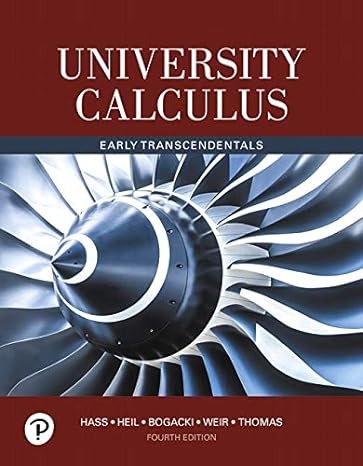
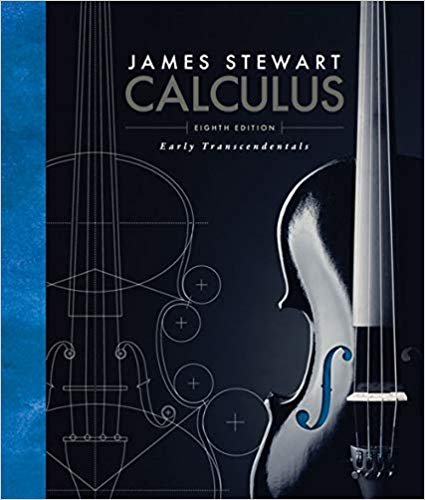
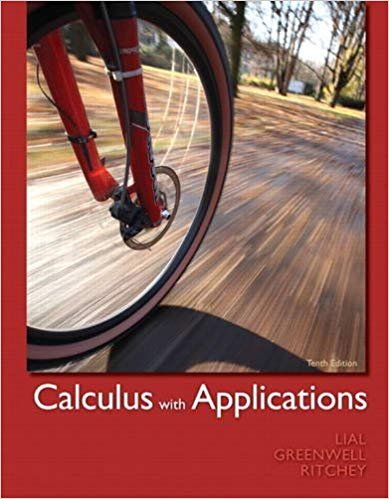
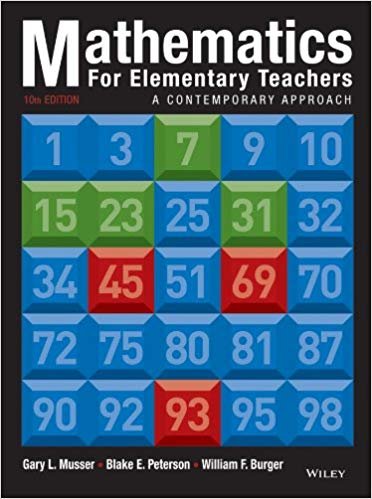
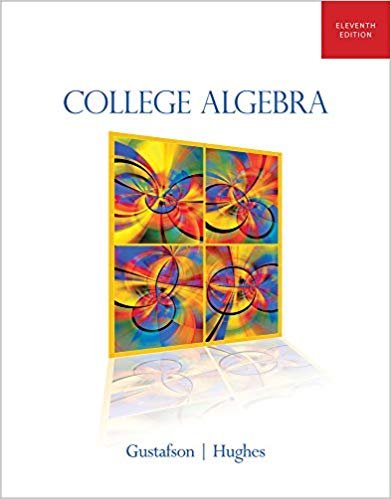
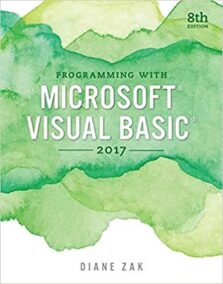
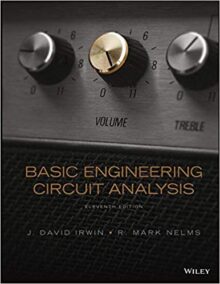
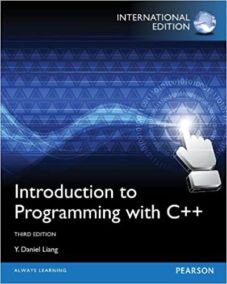
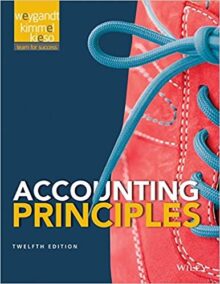
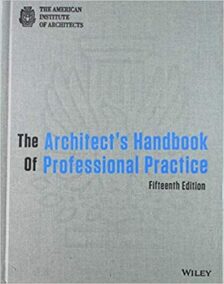
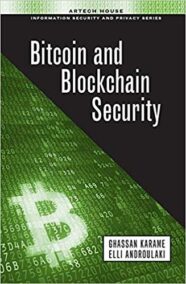
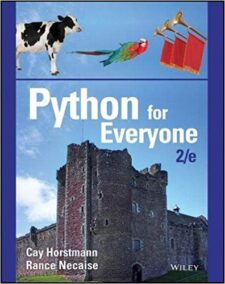

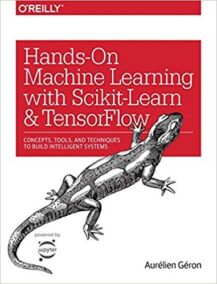
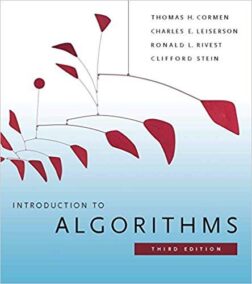

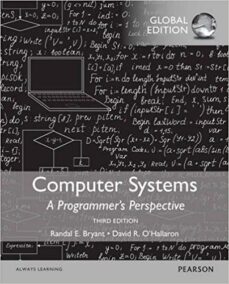




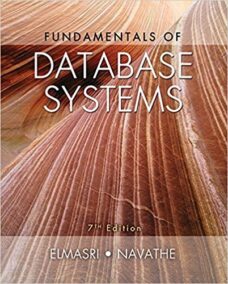
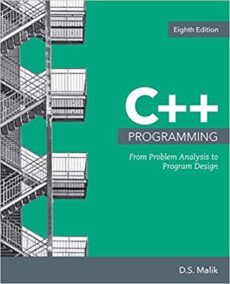
Reviews
There are no reviews yet.